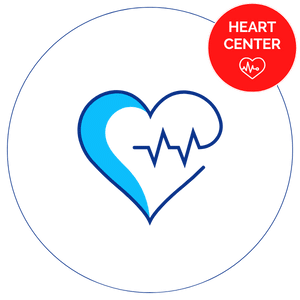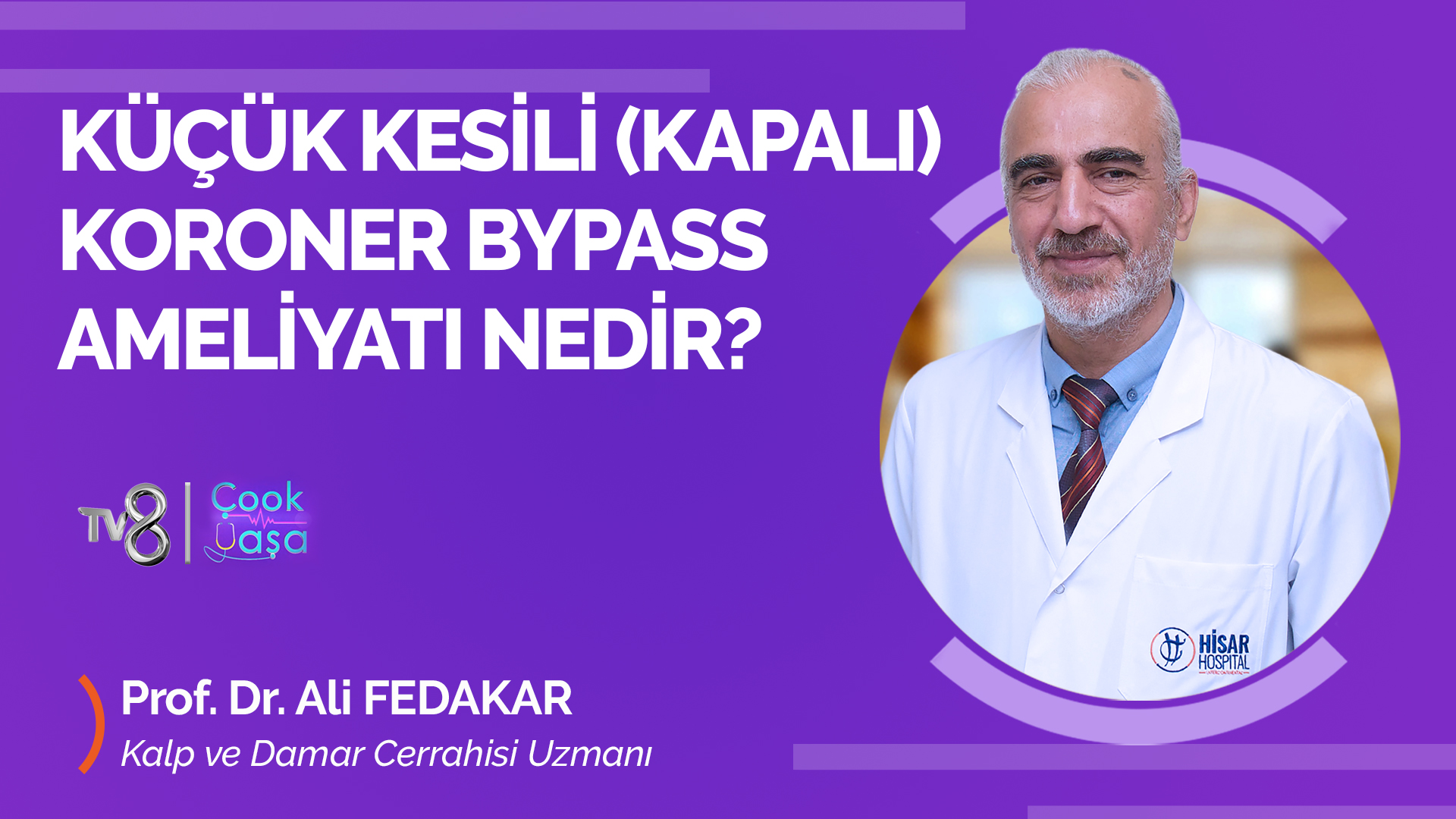Cardiovascular surgery is a surgical procedure involving the heart or the blood vessels leading to the heart. These procedures, conducted by specialized surgeons, are often applied to patients with heart disease or blood clot issues, and those at high risk of these problems.
What is Cardiovascular Surgery?
Cardiovascular surgery generally deals with the treatment of heart diseases, aneurysms, arterial blockages, heart valve diseases, and other cardiovascular disorders. Cardiovascular surgeons aim to improve patients’ quality of life and save lives through their expertise in surgical procedures. They investigate complex problems related to the heart and vascular system using advanced surgical techniques and technologies. Cardiovascular surgery requires specialized approaches related to the complex anatomy and functions of the heart, making it a field continuously evolving with new knowledge and technologies.
What Are Cardiovascular Diseases?
Cardiovascular diseases can affect one or more parts of the heart and blood vessels. Some diseases treated by cardiovascular surgery include:
- Coronary artery diseases: Occur when the blood flow to the heart muscle is obstructed or reduced.
- Angina: A heart disease that typically causes severe pain in the chest area, resulting from insufficient oxygen reaching the heart muscles and often triggered during physical activity or stress.
- Aneurysm: An abnormal swelling or ballooning in the wall of a blood vessel.
- Aortic aneurysm: An enlargement in the wall of the main artery called the aorta.
- Heart failure: Arises when heart muscles lose their function and contraction ability due to a heart attack or genetic disorders.
- Heart attack: Can occur when blood flow to the heart is reduced or a blockage occurs in the vessels, usually due to the accumulation of cholesterol and other substances.
- Abnormal heart rhythms: Also known as arrhythmia, can cause irregular, too slow, or too fast heartbeats.
- Heart valve diseases: Result from dysfunctions such as enlargement or narrowing of the heart valves.
- Arteriovenous fistula: A vascular abnormality where an abnormal connection forms between an artery and a vein. Arteries carry oxygen-rich blood from the heart to the body, while veins carry oxygen-poor blood back to the heart and usually have lower blood pressure.
- Varicose veins: Swellings usually seen in the legs due to the enlargement of the veins.
What Are the Symptoms of Cardiovascular Diseases?
Cardiovascular disease symptoms can vary depending on the underlying causes. Common symptoms of heart and vascular diseases may include:
- Chest pain or pressure: The most common symptom of heart disease or angina, usually felt in the center of the chest or left arm, sometimes spreading to the neck, back, or abdomen.
- Shortness of breath: May occur due to heart failure or other heart diseases, making it difficult to breathe even at rest.
- Fatigue and weakness: Cardiovascular diseases often fail to supply the body with enough oxygen, leading to constant fatigue and weakness.
- Palpitations or abnormal heartbeats: Can result from arrhythmias or heart valve diseases. Experiencing sudden heartbeats or irregular rhythms can indicate a serious condition.
- Edema: Abnormal fluid accumulation in the ankles, feet, or legs, which may be a sign of heart failure.
- Dizziness or fainting: May occur due to inadequate blood flow to the brain caused by heart failure, valve diseases, or anemia.
- Cold sweats: Can be seen in emergencies such as heart attacks or angina.
- Weight loss: Conditions like heart failure or vascular diseases can affect metabolism and lead to weight loss.
How Are Cardiovascular Diseases Diagnosed?
In diagnosing cardiovascular diseases, a specialist doctor first examines the patient’s history, genetic predisposition, and symptoms. Some tests may also be required for the diagnosis and follow-up of cardiovascular diseases. These tests may include:
- Blood test: Measures substances indicating cardiovascular health, such as cholesterol, blood sugar levels, and specific proteins. Doctors can also use blood tests to check for blood clotting issues.
- Ankle-brachial index (ABI): Compares blood pressure in the ankles and arms to diagnose peripheral artery disease.
- ECG: Records the heart’s electrical activity.
- Ambulatory monitoring: Uses wearable devices to track heart rhythm and rate.
- Echocardiogram: Uses sound waves to create an image of the heart’s beating and blood flow, providing information about heart valve problems and contraction function.
- Ultrasound: Uses sound waves to check blood flow in the legs or neck.
- Cardiac computed tomography (CT): Uses X-rays and computer processes to create 3D images of the heart and blood vessels.
- Cardiac magnetic resonance imaging (MRI): Uses radio waves to create highly detailed images of the heart.
- Cardiac catheterization: Uses a catheter (a thin, hollow tube) to measure pressure and blood flow in the heart, accurately detecting blockages in the heart’s vessels.
How Are Cardiovascular Diseases Treated?
Treatment plans may vary depending on the symptoms and type of cardiovascular disease. Cardiovascular disease treatment may include:
- Medication: Many heart and vascular diseases can be controlled with medications. For example, hypertension medications to lower blood pressure, statins to regulate cholesterol levels, or blood thinners to prevent clotting may be used.
- Lifestyle changes: Adopting a healthy lifestyle is crucial in managing heart and vascular diseases. Changes such as balanced nutrition, regular exercise, avoiding smoking and alcohol consumption can slow the disease’s progression and alleviate symptoms.
- Surgical intervention: In some cases, cardiovascular surgery may be necessary. Procedures such as heart valve repair or replacement, bypass surgery, aneurysm repair, or stent placement may be performed depending on the severity and type of the disease.
- Angioplasty and stent placement: Commonly used in treating coronary artery disease or arterial blockages. In this procedure, narrowed arteries are widened, and a small metal wire called a stent is placed inside the artery to keep it open.
- Pacemaker or defibrillator placement: Devices providing electrical stimulation to the heart may be implanted in cases of heart rhythm disorders or heart failure.
- Heart transplant: In severe cases like heart failure, when medication and other surgical interventions are insufficient, a heart transplant may be considered.
Frequently Asked Questions
Cardiovascular surgery is a medical specialty dealing with the treatment of heart and vascular diseases requiring surgical interventions. Cardiology, on the other hand, is a branch of medicine that deals with the diagnosis and treatment of heart and vascular diseases using non-surgical methods, typically medications and procedures.
Cardiovascular surgeons may request various tests to evaluate the patient’s condition. These tests can include blood tests, electrocardiography (ECG), echocardiography (ECHO), angiography, and computed tomography (CT) imaging tests.
Echo can indicate vascular blockages but is not sufficient for a definitive diagnosis. It can detect heart valve abnormalities but is not a direct indicator of vascular blockages. It can be a preliminary indicator in cases of impaired contraction function due to a past heart attack.
Whether there is a problem with the heart can generally be understood based on symptoms, physical examination, and diagnostic tests. Symptoms may include chest pain, shortness of breath, palpitations, dizziness, or fainting.
The symptoms of vascular blockages often vary depending on the affected area. Common symptoms include pain, tingling, or weakness in the legs, feeling cold in the limbs, swelling in the legs, and changes in skin color.
The first symptoms of heart disease can often be chest pain or pressure, shortness of breath, palpitations, and weakness. Additionally, symptoms like nausea, sweating, and dizziness can also be indicators of heart disease.
Pediatric cardiovascular surgery is a medical specialty involving the surgical treatment of congenital or acquired heart and vascular diseases in children.
The treatment for coronary artery disease generally involves a combination of lifestyle changes such as healthy eating, regular exercise, not smoking, and stress management, along with medication and surgical interventions.
Venous diseases refer to conditions affecting the veins in the venous circulation system, typically seen in the legs. These diseases include varicose veins, venous insufficiency, and deep vein thrombosis.
Vascular diseases refer to various health issues affecting the vascular system, including arteries, veins, and lymphatic vessels. These diseases include arterial blockages, varicose veins, aneurysms, peripheral artery disease, and lymphedema.
Cardiovascular diseases are serious conditions that can occur suddenly and carry life-threatening risks. Patients with symptoms of cardiovascular diseases can start treatment by making an appointment with the cardiology or cardiovascular surgery departments of hospitals.







